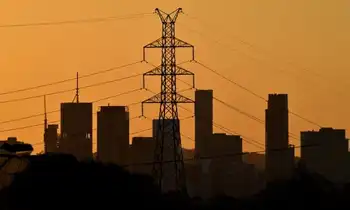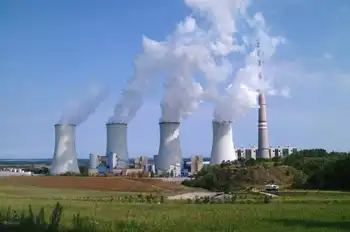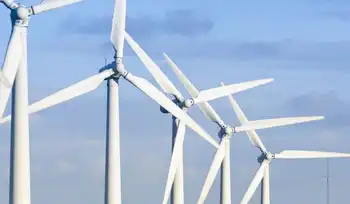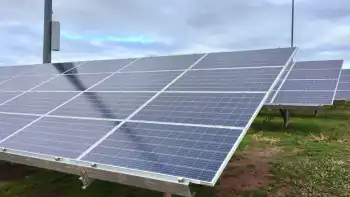Weak grid hampers Chinese wind integration
By International Herald Tribune
Protective Relay Training - Basic
Our customized live online or in‑person group training can be delivered to your staff at your location.

- Live Online
- 12 hours Instructor-led
- Group Training Available
Amid an investment boom fueled by rising coal prices and Beijing's drive for greener economic growth, China could have 100 gigawatts of wind power capacity by 2020, ten times its current capacity, experts and industry officials say.
But for the moment, production from turbine makers and investment by remote generators is moving far swifter than the grid, whose frailty was underscored by a severe icy spell in January that took down power lines.
China is also slow on reaching global standards for turbine efficiency but should overcome this as its wind-power boom produces several world-class turbine manufacturers.
"Quality control is a big problem," said Shi Pengfei, vice president of the China Wind Energy Association. "Another problem is the power grid. Power grids cannot keep up with the rapid development of wind farms."
In March China doubled its goal for wind power by 2010 to 10 gigawatts - and it is likely to exceed that level this year.
It was the fifth biggest in installed wind capacity in the world in 2007, accounting for about 6 percent of the total of 94 gigawatts, according to the Global Wind Energy Council.
Yet data from the China Electricity Council showed that wind accounted only for 0.8 percent of the overall power generation capacity in the country last year and a meager 0.2 percent of its total electric energy generation.
A turbine can only produce electricity when the wind is blowing, but generation rates at around 20 percent of installed capacity are significantly below global rates of around 25 percent to 30 percent.
Data compiled by the China Wind Association from 47 wind farms in 12 provinces showed that the 2007 average annual full load was 1,787 hours, or 20 percent, below its expectation of 2,000 hours, partly because of engineering problems.
"We've already had many failures. For example, they burn the converters," Shi said. "In three years, I hope things will get better."
Wind-turbine producers in the nation are expanding to fill the turbine shortage, with more than 40 domestic manufacturers now in existence.
Chinese machine builders, like Sinovel Wind, have set up plants, joining global players like Vestas, Suzlon or the local leader, Goldwind Science & Technology.
"Domestic manufacturing capacity in China will be about 8 gigawatts by the end of this year, and 10 to 12 gigawatts by 2010," said Steve Sawyer, secretary General of the Global Wind Energy Council. "That way, even if it doesn't grow beyond that, it is more than sufficient to reach 100 gigawatts by the end of next decade."
Referring to reaching 100 gigawatts by 2020, he said, "I think it is realistic, and possibly conservative."
While most of the turbines are still for the domestic market, some manufacturers have begun exports.
Guangdong Mingyang Wind Power Technology will start shipping turbines in August to GreenHunter Energy in the United States.
"The traffic is about to reverse," the Wind Council said in its 2007 report. "Not only does China have an insatiable demand for energy. It also has the industrial infrastructure and manpower to create a major powerhouse for turbine production."
Still, the industry officials say it will take another few years for Chinese manufacturers to mature, as they collect enough experience to improve their prototypes.
Despite the problems, industry officials say wind power in Inner Mongolia, known for its vast grasslands in the north, is now cheaper than coal-fired power in the southern province of Guangdong.
"Coal-fired power tariffs in Guangdong are already higher than wind tariffs in Inner Mongolia," said Ming Shao Lin, vice general manager for Inner Mongolia Huadian Huitengxile Wind Power, one of the biggest wind farms in China.
He said wind power costs 0.44 yuan per kilowatt hour, compared with 0.51 yuan per kilowatt hour for coal-fired power in Guangdong.
Inner Mongolia, which is the top base for wind power in the nation, plans to install 8 gigawatts by 2010 and 18 gigawatts by 2015, with Huitengxile alone doubling its capacity to 1 gigawatt by the end of 2010.
"The grid capacity is not big enough to transmit all electricity generated from wind," Ming said in Hohhot, the capital of Inner Mongolia.
Though Chinese law requires the two state-owned power grid operators to provide connections and buy up all renewable energy, they have been slow, especially as wind farms are often remote and wind power generation fluctuates, depending on the weather.
"The government must and fully intends to build the grid out," said Paul Eveleigh, chief executive of Honiton Energy Holdings. "It is the question of whether they do it quickly enough the way everybody wants them to do it."
The company is building wind farms in Inner Mongolia, with 50 megawatts already completed and 100 megawatts to be added this year, and is using foreign-made turbines. "I have a lot of confidence in what Chinese manufacturers are going to be able to do," Eveleigh said.
"And I would say very quickly Chinese turbines will be an option for everyone."











